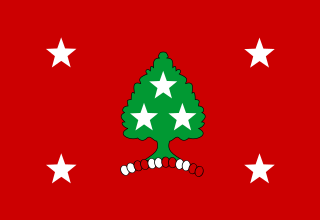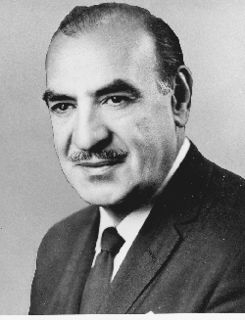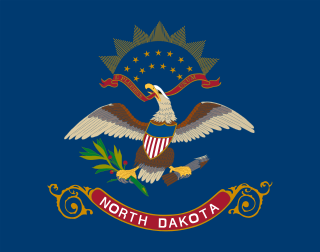
The governor of Tennessee is the head of government of the U.S. state of Tennessee. The governor is the only official in Tennessee state government who is directly elected by the voters of the entire state.

Anthony Joseph Celebrezze Sr. was an American politician of the Democratic Party, who served as the 49th Mayor of Cleveland, Ohio, as a cabinet member in the Kennedy and Johnson administrations, and as a United States Circuit Judge of the United States Court of Appeals for the Sixth Circuit.
The government of the U.S. state of Ohio consists of the executive, judicial, and legislative branches. Its basic structure is set forth in the Constitution and law of Ohio.
The statutes of the State of Ohio have established 26 departments of government which are responsible to the Governor. These departments are led by the Director, or in some cases the Commissioner, who must inform and assist the governor in the operation of the state. After the governor appoints the potential director, they must be affirmed by the Ohio Senate.

Ministers, in the New Zealand Government, are members of Parliament (MPs) who hold ministerial warrants from the Crown to perform certain functions of government. This includes formulating and implementing policies and advising the governor-general. Ministers collectively make up the executive branch of the New Zealand state. The governor-general is obliged to follow the advice of the prime minister on the appointment and dismissal of ministers.

The Queensland Government is the democratic administrative authority of the Australian state of Queensland. The Government of Queensland, a parliamentary constitutional monarchy was formed in 1859 as prescribed in its Constitution, as amended from time to time. Since the Federation of Australia in 1901, Queensland has been a State of Australia, with the Constitution of Australia regulating the relationships between all state and territory governments and the Australian Government. Under the Australian Constitution, all states and territories ceded powers relating to certain matters to the federal government.

The Australian Government, also known as the Commonwealth Government, is the national government of Australia, a federal parliamentary constitutional monarchy. Like other Westminster-style systems of government, the Australian Government is made up of three branches: the executive, the legislative, and the judicial.

The Cabinet of the governor of Oklahoma is a body of the most senior appointed officials of the executive branch of the government of Oklahoma. Originally an informal meeting between the governor of Oklahoma and various government officials, the Governor's Cabinet has evolved into an important information link between the governor and the various agencies, boards and commissions that operate within state government.

The New Zealand Government is the central government through which political authority is exercised in New Zealand. As in most other parliamentary democracies, the term "Government" refers chiefly to the executive branch, and more specifically to the collective ministry directing the executive. Based on the principle of responsible government, it operates within the framework that "the Queen reigns, but the government rules, so long as it has the support of the House of Representatives". The Cabinet Manual describes the main laws, rules and conventions affecting the conduct and operation of the Government.

The North Dakota State Cabinet is part of the executive branch of the Government of the U.S. state of North Dakota, consisting of the appointed heads of the North Dakota state executive departments. The State Cabinet has evolved into a major part of the State government.
The cabinet of Governor of New York David Paterson consists of the executive chamber, and the heads of the various departments of the Government of New York. On Paterson's first day as governor, he asked for letters of resignation from all of the top staff members and state agency commissioners appointed by previous Governor Eliot Spitzer. This typical action does not mean the holdovers from the Spitzer administration will be replaced, and Paterson said that "having the letters gives him the flexibility to make changes if he decides to".
As established and defined by the Kentucky Constitution, the government of the Commonwealth of Kentucky is composed of three branches: the Executive, Judicial, and Legislative.
The government of Nevada comprises three branches of government: the executive branch consisting of the governor of Nevada and the governor's cabinet along with the other elected constitutional officers; the legislative branch consisting of the Nevada Legislature which includes the Assembly and the Senate; and the judicial branch consisting of the Supreme Court of Nevada and lower courts.
The government of New Mexico is the governmental structure of the state of New Mexico as established by the Constitution of New Mexico. The executive is composed of the governor, several other statewide elected officials and the governor's cabinet. The New Mexico Legislature consists of the House of Representatives and Senate. The judiciary is composed of the New Mexico Supreme Court and lower courts. There is also local government, consisting of county administrations, city governments, and special districts.
The Kansas State Cabinet is part of the executive branch of the Government of the U.S. state of Kansas, consisting of the appointed heads of the Kansas state executive departments.
Terri L. White is Chief Executive Officer of the nonprofit Mental Health Association Oklahoma, as of August 2020. She is an American social worker who resigned effective February 1, 2020 as Commissioner of the Oklahoma Department of Mental Health and Substance Abuse Services, a position she has held since May 13, 2007. White previously served Democratic Governor of Oklahoma Brad Henry as a member of his Cabinet concurrent to her service as commissioner. White served as Henry's fourth Secretary of Health, becoming the first woman in State history to hold that post. Upon the election of Henry's successor, Republican Mary Fallin, White ceased being a member of the governor's Cabinet but retained her position as commissioner.
The Virginia Governor's Cabinet is a body of the most senior appointed officers of the executive branch of the government of Virginia. The Cabinet is responsible for advising the Governor of Virginia. Cabinet officers are nominated by the Governor and then presented to the Virginia General Assembly for confirmation. Once confirmed, all members of the Cabinet receive the title "Secretary" and serve at the pleasure of the Governor.

The New Mexico Department of Health (NMDOH) is the state agency charged with handling all medical and health related fields within the state of New Mexico in the United States.
The Massachusetts Executive Office of Health and Human Services (EOHHS) is a Cabinet level agency under the Governor of Massachusetts. EOHHS is the largest secretariat in Massachusetts, and is responsible for the Medicaid program, child welfare, public health, disabilities, veterans’ affairs, and elder affairs. In total, EOHHS oversees 17 state agencies.

The executive branch of the government of Puerto Rico is responsible for executing the laws of Puerto Rico, as well as causing them to be executed. Article IV of the Constitution of Puerto Rico vests the executive power on the Governor—whom by its nature forms the executive branch.